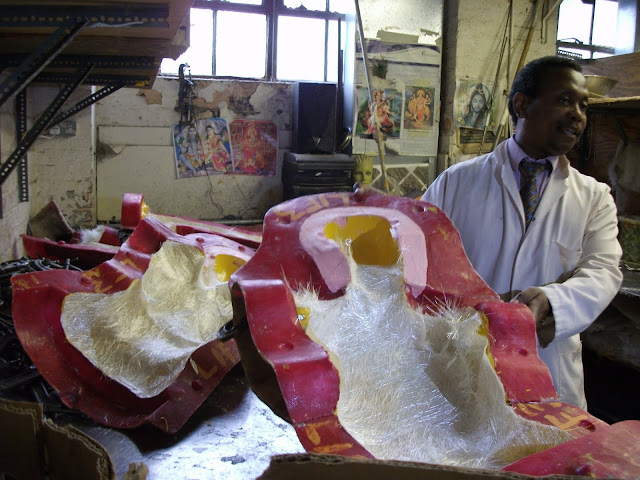Destination : 9 Beaumont Avenue , Rootstein Display Mannequins Factory, London
I had that spoooooky , terrible feeling when I first heard we were going to visit a mannequin factory - there is something about clowns and mannequins that just makes me feel a bit weird. I thought hmmmm it will be quite the experience I can't miss this even if I might get a bit freaked out . Well it just wasn't the case!
As soon as we entered the door of the factory we were greated by the man who would soon explain us the whole production process of the mannequins and show us around. It was magnificent , so interesting to explore this building I couldn't believe what a wonderful morning this turned out to be!
He took us to every corner of the factory and let us take pictures of everything they had in storage. It was brilliant and we got some good information , which I think for a future career in the fashion industry, especially in the field of Visual Merchandising will prove to be very helpful.
'In a factory in west London lie the body parts of some of the most beautiful women - and men - of the the past half century. It’s home to the limbs of models Erin O’Connor, Kate Moss, Karen, Mulder, Dianne Brill, Yasmin Le Bon and Twiggy; a place where Joan Collins and Joanna Lumley have pouted and preened; and where singers Sandie Shaw and Elaine Paige rubbed cold shoulders with Mike D’Abo, lead vocalist from mod hipsters Manfred Mann. Even a swaggering Lord Litchfield could be found here. The factory is that of Adel Rootstein, mannequin maker and trendsetter, whose influence in visual merchandising takes in the Swinging Sixties and the power-dressing 1980s, changing, through her mannequins, the way we buy fashion.' http://www.wonderlandmagazine.com/features/who_you_calling_dummy/
Just to get an idea of what exactly we learned there I will try to describe all the steps of the production from the sculpting of the human shape all the way to the packaging and shipping.
STEPS into making a mannequin:
1. Sculpting the shape after a human model (including expression, pose, curves of the body)
2. Mould making for future replicas
 |
| Mould making |
 |
| Different poses |
3. Pouring the gel into the mould and letting it dry out
 |
| Mould on the inside |
4. Unscrewing the mould and taking the bodyparts out
5. Polishing the bodyparts and putting them together
 |
| polishing room |
6. Painting Room is where the mannequins get their custom skin tone
7. Applying the ears, poneytails and other different parts which the customer has requested
 |
| ears |
 |
| Poneytail |
8. Wig-Making
9. Make-up
 |
| Special Make-up at the customer's request |
 |
| Barbie GLAM and Barbie Original |
10. Packaging and Shipping
For more information on the Rootstein Factory visit their website at http://rootstein.com/ and check the showrooms in New York and London out!












































